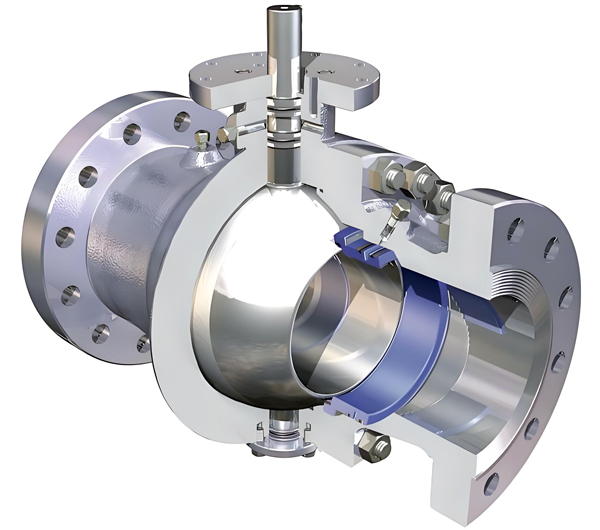Full Port Ball Valves: Design Principles, Calculations, and Industrial Applications
Ball valve flow channel diameter is a critical performance factor. For full port ball valves, this dimension dictates flow efficiency, pressure loss, and suitability for high-demand industries. Here’s how to engineer and deploy them effectively.
Full Port Ball Valve: Definition & Calculation Methods
1. Core Definition
A full port (full bore) ball valve has a flow channel diameter matching ≥95% of the pipeline’s inner diameter, enabling near-unrestricted flow with minimal pressure drop.
2. Flow-Based Calculation
Use the empirical fluid dynamics formula:
Q = K × Cv × √ΔP
Q: Flow rate (GPM or m³/h)
K: Correction factor (typically 0.9)
Cv: Flow coefficient (valve-specific)
ΔP: Pressure differential (psi or bar)
Derived bore diameter formula:
d = (Q / (0.9 × Cv × √ΔP)) × 25.4
(d = diameter in mm; 25.4 = inch-mm conversion)
3. Pipeline Size Shortcut
d = D × 0.8
d: Valve bore diameter
D: Pipeline outer diameter
Example: For a 100mm OD pipe, select a valve with ≥80mm bore.
Full Port vs Reduce Port: Critical Differences
Parameter |
Full Port Ball Valve |
Reduce Port Ball Valve |
|---|---|---|
| Flow Channel | Matches pipe ID (e.g., DN50 = 50mm) | 1-2 sizes smaller (e.g., DN50 ≈ 38mm) |
| Flow Efficiency | Near-zero resistance; full flow | 15-30% flow reduction |
| Pressure Drop | Negligible | Significant at high flow rates |
| Applications | Critical for pigging, viscous fluids | Low-flow systems; cost-sensitive projects |
Key Insight:
A DN50 full port valve maintains 50mm flow, while a reduce port DN50 valve reduces flow to ~DN40 (38mm) – a 24% flow area loss.
Industrial Applications: Where Full Port Valves Excel
1. Oil & Gas Pipelines
Function: Trunk line shutoff/control
Advantage: Enables pipeline pigging for maintenance; handles crude oil/slurry without clogging.
2. Chemical Processing
Use Case: High-flow reactor feed lines
Benefit: Prevents flow restrictions that disrupt production continuity.
3. Water Management
Applications:
1. Municipal water supply mains
2. Wastewater treatment plant inlets/outlets
Why: Maximizes flow for peak demand periods.
Selection Guidelines: When to Choose Full Port
Opt for full port valves when:
1. Flow is critical: Systems requiring minimal pressure loss (e.g., long-distance pipelines).
2. Media is challenging: Viscous fluids, slurries, or cleanable systems.
3. Future-proofing: Projects anticipating flow rate increases.
Cost Consideration:
Full port valves cost 20-30% more than reduce port but reduce energy consumption by up to 15% in high-flow systems.
Post time: Feb-15-2025







